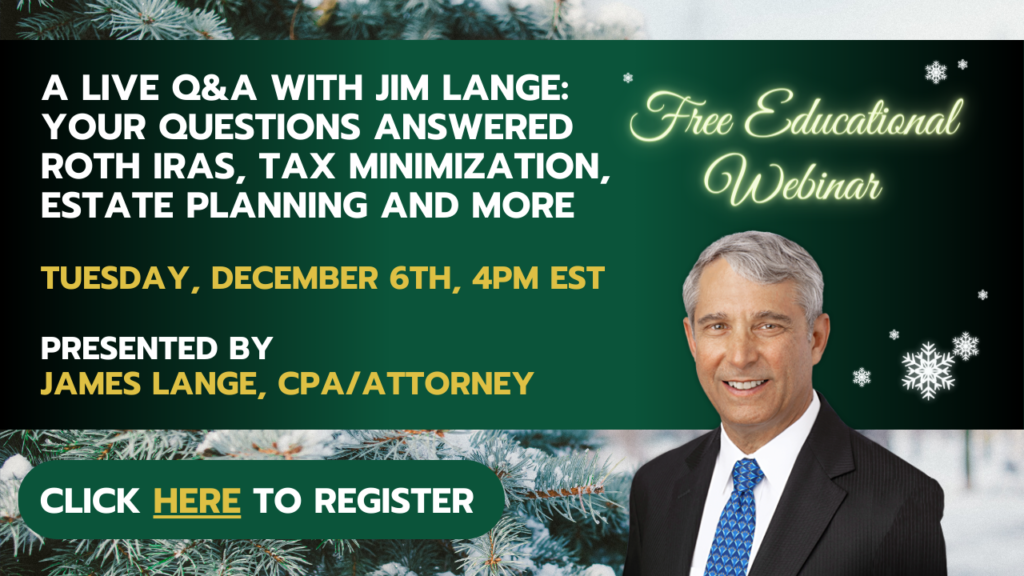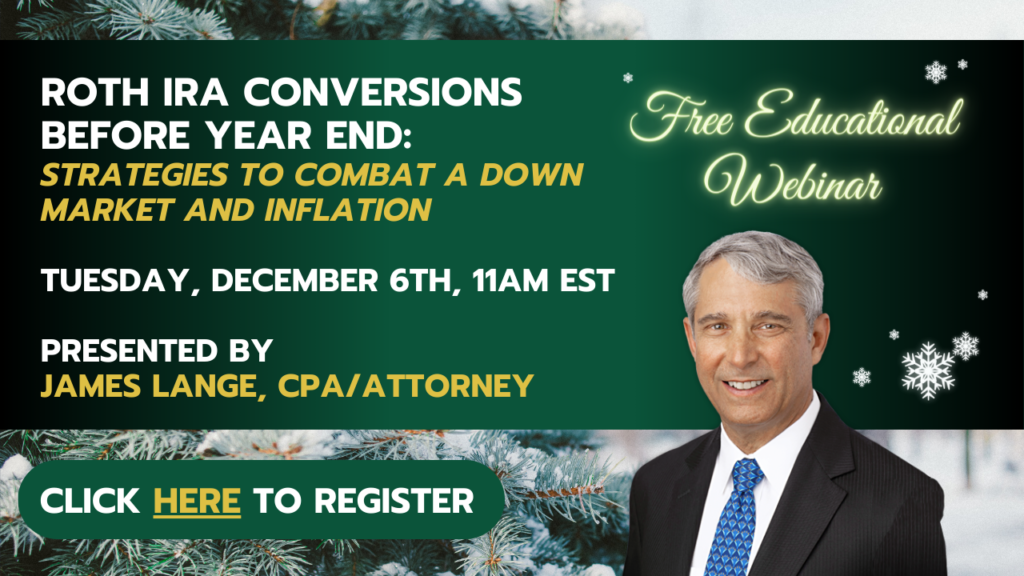Table of Contents
“As you grow older, you will discover that you have two hands: one for helping yourself, the other for helping others.”
—Sam Levenson
The following is an excerpt from our upcoming book: Retire Secure for Professors: Maximize and Protect Your TIAAs, IRAS, and Other Retirement Plans
Charitable giving and bequests are a broad topic, and mostly beyond the scope of this chapter. Before you make any substantial gifts, whether to charities or as gifts to people, you will need to first think about how much you want to give away while you are alive and how much you want to give to specific charities and individuals at your death. The focus of this chapter is on using Qualified Charitable Distributions (‘QCDs’) as a tool to satisfy your charitable giving intentions while you are alive. Later in this chapter, I will provide a broad overview of the points to consider in the gifts you make during your life and the bequests you make at death.
Most university faculty members who are over age 70½ (not 72 as you might think is logical) will have money in a Traditional IRA, and many will make annual donations to charity. If this describes you, you should be glad to know that the Qualified Charitable Distribution rules are now permanent tax laws, and we can safely put them to use.
QCD Rules and Limitations
A QCD is a method for donating to charity directly from your IRA. It only applies to distributions from IRAs, not other retirement plans like 401(k)s or 403(b)s. So, if you are still working, you cannot make a QCD from your university retirement plan, as QCDs can only be made from IRAs. If your plan permits in-service withdrawals, however, you could transfer funds from your university retirement plan through a trustee-to-trustee transfer into an IRA account. You can then use QCDs using a ‘back-door’ method by effectively using your work-related retirement plan money to take advantage of the favorable tax treatment by giving to charity through a QCD. Of course, you have to be charitably inclined to want to go through this extra step.
When the QCD laws were established, you had to begin taking RMDs by age 70½. Even though the SECURE Act raised the RMD age to 72, it didn’t change the QCD laws. Before the SECURE Act, if you were making QCDs before you turned 72, your charitable contribution coming directly from your IRA counted as at least part of your RMD. Now, however, if you are age 71, you may still make a QCD even though you aren’t required to take an RMD. If you do not itemize deductions, the result does affect your taxes, because the QCD is not included in your taxable income. In addition, since you are using pre-tax IRA money instead of after-tax money to make the donations, you are inherently saving taxes.
The QCD rules allow you to make charitable donations directly from your IRA. The good news is that, even though you are taking a withdrawal from your Traditional IRA to make the donation, it is not taxable to you. On the other hand, you cannot claim a charitable contribution that was given via a QCD on your itemized deductions. People often think making a charitable donation through a QCD will not make any difference in their taxes, and, in some cases, it might not make a significant difference if you itemize your deductions, depending upon the amount of the contribution.
The Tax Cuts and Jobs Act of 2017, which cut tax rates but also restricted itemized deductions and increased the standard deduction, was a game-changer. Many taxpayers who used to itemize will no longer be able to do so. For the people who used to itemize but no longer can, QCDs provide a terrific way to save on taxes.
You get money out of your IRA without having to pay taxes. In many cases, if you didn’t have that option and you weren’t itemizing your deductions, you would not get the benefit of the charitable deduction, with the exception of a lousy $300 per individual (maximum $600 deduction for a married couple) that was available as part of Covid relief for non-itemizers for 2020 and 2021. As this book goes to press, it is not clear whether this deduction will be extended or not.
Rules limit the types of charities that can receive QCD donations. Donations to donor-advised funds, private foundations, or a supporting organization under IRS Section 509(a)(3) are not permitted. Unfortunately, this means that donations to a Fidelity or Vanguard Charitable Giving account or any other donor-advised fund cannot be used for QCDs. However, most other 501(c)(3) charities qualify.
QCD rules limit direct IRA donations to charity to $100,000 per year per person. If you are married, you and your spouse can donate up to $100,000 each or $200,000 total. As of this book writing, there is proposed legislation to increase the QCD limit to $130,000 per individual. For some clients, the best math solution for their goals was to aggressively use QCDs for the rest of their lives or at least to the point they wanted to continue making charitable deductions.
Even if you do itemize, the advantage of using QCDs is that you lower your taxable IRA income and thus lower the Adjusted Gross Income (AGI) shown on your tax return. If you only take the required distribution from your IRAs and you use a QCD, you will only be taxed on the remainder of your RMD above the charitable contribution. This provides many money-saving advantages in various tax situations, as discussed below.
For university professors who have after-tax contributions in their IRAs, any charitable contributions made through a QCD will not use up any of the after-tax basis. The pro-rata rules do not apply to these types of distributions which is good news.
Watch Out for Limits on QCDs if You’re Still Contributing to a Traditional IRA
One caveat I want to mention when making QCDs when you are over age 70½. As stated previously, with the passing of the SECURE Act, the age limit cap on making Traditional IRA contributions was removed. This means tax-deductible IRA contributions can be made for older professors up to their earned income to a maximum of $7,000 if their income is below the income thresholds. The SECURE Act also included an anti-abuse provision that disallows you from making a tax-deductible IRA contribution and taking a QCD in the same year for that amount. Basically, the IRS is saying you cannot ‘double-dip’ by taking a tax deduction for your IRA contribution and make a charitable contribution through a QCD. If you have earned income and contribute to an IRA after age 70½ and take a tax deduction, any future QCD will be reduced by the cumulative amount of IRA contributions you make after age 70½.
For example, if you contribute $7,000 to an IRA in the year you turn 70½, then make a QCD of $10,000 the next year, you will only be allowed to make a QCD of $3,000. The remaining $7,000 will be a taxable distribution from your IRA, which you can also deduct as a charitable contribution if you are itemizing your deductions. If you are not itemizing, your taxable income will increase by the disallowed amount of your QCD with no offsetting deduction.
The purpose of the anti-abuse provision is to prevent individuals from deducting IRA contributions (above-the-line deduction, thereby reducing AGI) and then making a donation of the contributions on a pre-tax basis as a QCD—thereby, ‘double-dipping.’
A planning technique if you are married and making tax-deductible IRA contributions and using QCDs as your annual gifting strategy would be for one spouse to make a tax-deductible IRA contribution to their own account and the other spouse to make the QCD from their account.
Remember, notwithstanding the above, if you have post-tax contributions in your IRA, the QCD operates on a first-in-first-out basis, with the pre-tax contributions being distributed first.
* * * * * *
To read the remainder of this chapter, please join our Book Launch Team by going to https://PayTaxesLater.com/ProfessorBookLauch and completing the form. The book is in the final pre-publication stages, and if you join our Book Launch Team, you will receive immediate access to the working manuscript.
About the Author: Steve Kohman is our senior veteran number-crunching CPA. Special thanks to James Lange, CPA/Attorney and Jen Hall, CPA, for their significant additions to this chapter.
All written content is provided for information purposes only and is not tax or legal advice. Information and ideas provided should be discussed in detail with an advisor, accountant, or legal counsel prior to implementation. Past performance may not be indicative of future results. All investing involves risk, including the potential for loss of principal. There is no guarantee that any investment plan or strategy will be successful.
Roth IRA Conversions During Periods of a Down Market and Inflation and
The Best and Most Flexible Estate Plan for Retirement Plan Owners
Tuesday, December 6, 2022
Register to Attend 1, 2, or all 3 FREE Webinars at:
https://PayTaxesLater.com/Webinars
Would you like to know the objective answer behind whether you should make a Roth conversion in a down market and in the midst of high inflation? If so, how much should you convert and when?
Roth IRA conversions and the transfer of funds from the taxable to the tax-free world could be the most important strategy you implement to protect yourself and your family from massive tax acceleration.
Even if you get the Roth conversion right, are your wills, trusts, and beneficiary designations in place to maximize the value of your estate for your heirs? Probably not.
And that’s why we have made it the mission of these December webinars to educate our clients and readers on the best strategies to preserve your IRA and retirement wealth for yourself and your family. The best strategies usually involve the appropriate Roth IRA conversion plan as well as the appropriate estate plan.
As you will learn by attending our webinars (described below), we believe there are things you can do to protect your families’ financial security during a market downturn and in times of inflation.
We’ve helped thousands of our clients implement retirement, tax, and estate planning strategies that help slash taxes and build wealth. Now we want to share that knowledge, expertise, and experience with you. We want you to get the most out of what you’ve got.
Don’t underestimate the importance of getting your retirement decisions right the first time—mistakes can be very costly and difficult, if not impossible, to recover from.
We invite you to discover our proven methods for improving and protecting your retirement finances.
Click here to register
Session 1: Tuesday, December 6th (11 am – 1 pm Eastern)
Roth IRA Conversions Before Year End: Strategies to Combat a Down Market and Inflation
In this Roth IRA-focused session, you’ll discover:
- The relationship between inflation and Roth IRA conversions: How does inflation impact your Roth conversion planning?
- Should you make a Roth IRA conversion before year’s end?
- Advanced Roth conversion techniques: 1) Impact on Medicare premiums; 2) Mega back-door Roth IRA conversions; 3) Making Inherited Roth 401(k) conversions after you are dead.
- The tax-minimizing benefits & strategic synergy of making well-timed Roth IRA conversions during a market downturn.
- The tax-accelerating impact the SECURE Act will have on your retirement plans and your financial legacy if you do not take action.
- How SECURE Act 2.0 impacts Roth IRA conversion planning.
- The peer-reviewed math & optimal timing for Roth IRA conversions.
- The one single financial decision that can get you bigger Social Security checks.
- The implications of the back-door Roth and what to do about it in 2022.

Click here to register
Session 2: Tuesday, December 6th (1:30 – 3:30 pm Eastern)
The Most Flexible & Best Estate Plan for IRA & Retirement Plan Owners
In this session, we will explore an estate planning system based on a series of disclaimers. Disclaimers allow enormous flexibility for planning for your estate, and one important feature of that flexibility is that it allows you to create a plan that can be adapted based on the economic climate at the time of your death.
We believe flexible estate plans should be used routinely, but in practice, they rarely are.
This kind of flexibility is particularly crucial after the passage of the SECURE Act which has up-ended pre-existing laws governing the distribution and tax treatment of monies from inherited IRAs and retirement plans. We will delve into the nitty gritty of those changes and our recommendations for how IRA owners should respond via their estate planning.
For many $1M+ IRA or retirement plan owners, unless you take aggressive action, your loved ones will likely take a massive income tax hit on the monies in those plans…
So, this workshop will concentrate on what you could do to preserve your estate, especially around wills, trusts, and beneficiary designations of your IRAs and other retirement plans.
We’ve combined our newest thinking with some of our classic strategies for protecting your children or grandchildren from themselves, but also creditors, possibly including their current spouse.
We will also dive into:
- The details of the best estate plan for married retirement plan owners know as Lange’s Cascading Beneficiary Plan.
- Should your heirs inherit your IRA and other retirement assets directly, or would naming a trust to be wiser?
- Charitable trusts as beneficiaries of your IRAs and retirement assets.
- Do you need the ever more popular “I don’t want my no-good son-in-law to inherit one red cent of my money trust?”
- We will combine our newest thinking with some of our classic strategies for protecting your children or grandchildren from themselves, but also creditors, possibly including their spouses.

Click here to register
Session 3: Tuesday, December 6th (4 – 5 pm Eastern)
A Live Q&A with Jim Lange: Your Questions Answered Roth IRAs, Tax Minimization, Estate Planning, and More
Jim will answer attendees’ questions submitted in advance of these webinars as well as those submitted during the webinar. Take advantage of this opportunity to have your financial questions answered.
Register to Attend 1, 2, or All 3 FREE Webinars at: https://PayTaxesLater.com/Webinars
Past performance is no guarantee of future results. All investing involves risk, including the potential for loss of principal. There is no guarantee that any strategy will be successful. Indexes are not available for direct investment.


